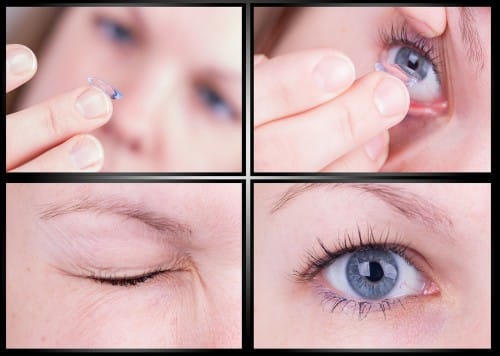Every year, more than a billion people suffer from an infection born from a fungus, with levels of severity ranging from life-threatening and infection of the circulatory system to local skin irritation. The phenomenon is serious in those whose immune system is weak and who suffer from bacteria resistant to antibiotics

Scientists at IBM, in collaboration with the Institute of Bioengineering and Nanotechnology of Singapore, have succeeded for the first time in recycling ordinary plastic used in drinking bottles (PET) into non-toxic and biodegradable materials capable of fighting fungal infections. The results of a new study on the subject, which includes treatment of laboratory mice infected with eye infections typical of the use of contact lenses, were published last week in an article in the scientific journal Nature.
Every year, more than a billion people suffer from an infection born from a fungus, with levels of severity ranging from life-threatening and infection of the circulatory system to local skin irritation. The chances of contracting such an infection are higher as there are deficiencies in the functioning of the immune system, typical of diseases such as AIDS and cancer, as well as in those who receive antibiotic treatments, and as bacteria resistant to these treatments develop.
The medical world is faced with the need to develop targeted antifungal agents that will reduce the development of drug resistance. Traditional antifungal drugs need to penetrate into the living cell, in order to attack the source of the infection there - but have difficulty focusing and penetrating through the membrane that surrounds the fungus. In addition, since fungi are characterized by a metabolism similar to that of mammals, existing drugs may have difficulty distinguishing between healthy and infected cells.
The IBM researchers used a catalytic organic process, in order to turn the plastic - such as the plastic waste of used drinking bottles - into completely new molecules, which can be turned into an antifungal substance. This is a significant innovation also with regard to the quality of the environment, since plastic bottles are currently only recycled through a process of mechanical grinding, and are reused only in secondary products such as fibers for clothes, carpets or equipment for playgrounds.
איך זה עובד?
The antifungal materials are built in a self-assembly process, while binding hydrogen molecules: the adhesion and combination of the molecules is carried out in a process reminiscent of that of adhesive films that are attached to the surface of tiny sliders (Velcro) - when at the end of the way, a nanometer fiber with unique characteristics is formed. The importance of the fiber structure is due to the fact that antifungal agents are active as drugs only when they reach their target in the body in the structure of a fiber, or as a polymer-like molecule.
The innovative nanometer fiber is characterized by a positive electric charge, and is able to selectively focus and contact only the membranes of fungi that carry a negative electric charge, through an electrostatic process. Upon attachment, the fiber penetrates and breaks through the membrane walls of the fungus - without risking the development of resistance to it.
With the help of advanced simulation tools, the researchers at IBM performed a simulation of the self-building processes of the antifungal substance, and predicted that these structural changes would enable the desired therapeutic efficiency. Now, the researchers are beginning to define rules for self-building processes of complex materials, which will be able to deal with infections on the one hand - and will be able to be packaged effectively for the purposes of the conduction processes in the body, to the site in the body where they are required to operate.
The minimum concentration of nanofibers capable of inhibiting the growth of fungi has proven to be effective against a wide variety of types of infection.
In follow-up studies, carried out in Singapore, it was found that nanofibers were able to eliminate more than 99.9% of C. albicans infection, which ranks third in the frequency of blood infections in the US - after only one hour of treatment, and without the development of drug resistance even after 11 Treatment cycles. Conventional antifungal drugs were accompanied by the development of resistance of the fungus already after six treatments. The study also revealed that nanofibers succeed in suppressing the biological membrane of the fungus after just one treatment - while conventional drugs are not effective against this membrane at all.
The effectiveness of the treatment was also proven in experiments on laboratory mice, which were infected with the infections typical of the use of science lenses in humans. The nanofibers significantly reduced the amount of fungi, prevented the growth of new fungal structures, and reduced the severity of the inflammation in the eye. The experiment also proved that mammalian cells continue to function without interruption even long after being exposed to nanofibers - and all without significant damage to the eye tissues of the mouse treated with the new technology.
For information and commentary on the subject on the medical website medicalnewstoday
